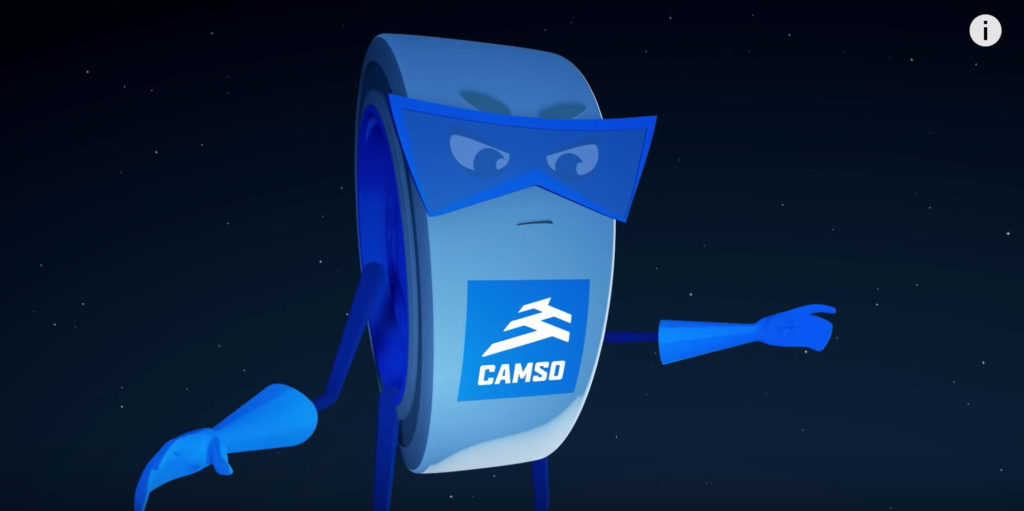This short animation from solid tire maker Camso highlights the static electricity hazards associated with non-marking forklift tires. Individuals driving forklifts equipped with these types of tires can receive static shocks of up to 50,000V, which is a real safety issue for companies.
The silica used as a reinforcing filler in non-marking tires is an insulator, meaning that static electricity generated by the friction is stored rather than dissipated. This can cause potential hazards such as operator injuries, fires, damage to facilities, outages and circuit damage.
While grounding straps and chains provide some protection, they wear down, break, or collect dust and debris, which gradually insulates them from the ground, and they can also be costly.
Camso offers a complete range of solid non-marking anti-static forklift tires. The Solideal RES Xtreme NMAS is cured with a cylindrical piece of highly conductive black rubber connected all the way from the steel wheel to the tread face, which acts as a path to dissipate accumulated electricity on every rotation. This anti-static plug is easily noticeable when looking at the tire: there is a black dot on the face of the tread.
“The Solideal PON 775 NMAS received an unprecedented welcome to the market. Customers are finally able to purchase an extreme performance non-marking tire that also prevents static electricity build-up. While press-on tires are found predominantly in North America, forklifts in Europe, Oceania and Latin America mostly run on resilient tires. As the global leader in the industry, we had to develop a resilient NMAS tire to answer customers’ needs around the world,” said Thierry Miche, product line executive director – material handling, at Camso.
According to Camso, the Solideal RES Xtreme NMAS reduces vibration, which increases operator comfort and lowers heat build-up for a longer tire life. Its design borrows key features from the popular Solideal RES 660 Xtreme Series and benefits from Camso’s proven anti-static technology.
“For several years, the adverse problem of static build-up has been part of the material handling industry. Since the use of non-marking tires is a requirement for up to 30% of forklift applications, their tendency to create static was just part of the price you had to pay for their benefits,” added Miche.



